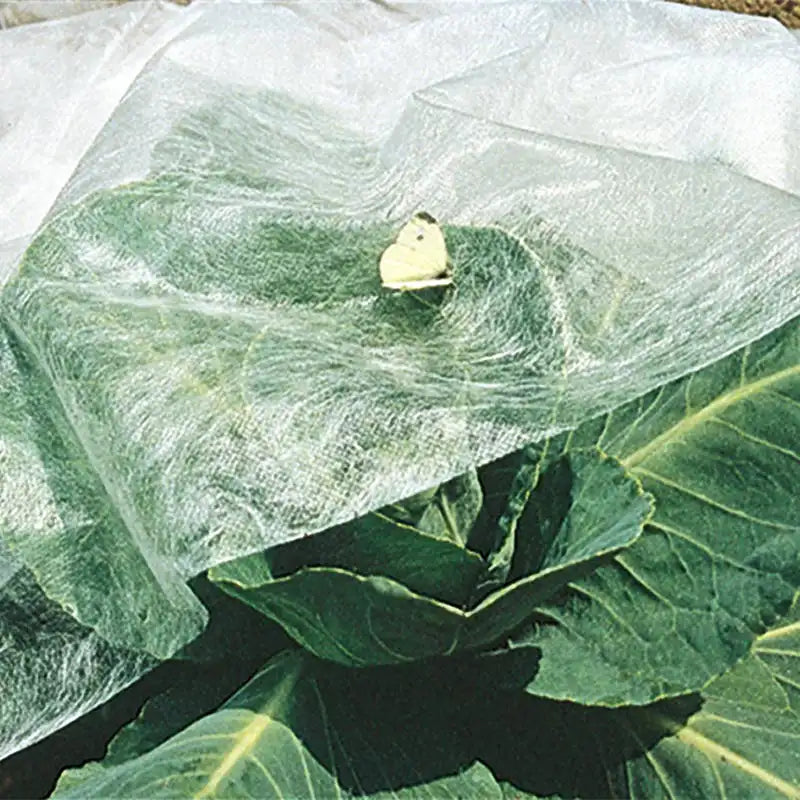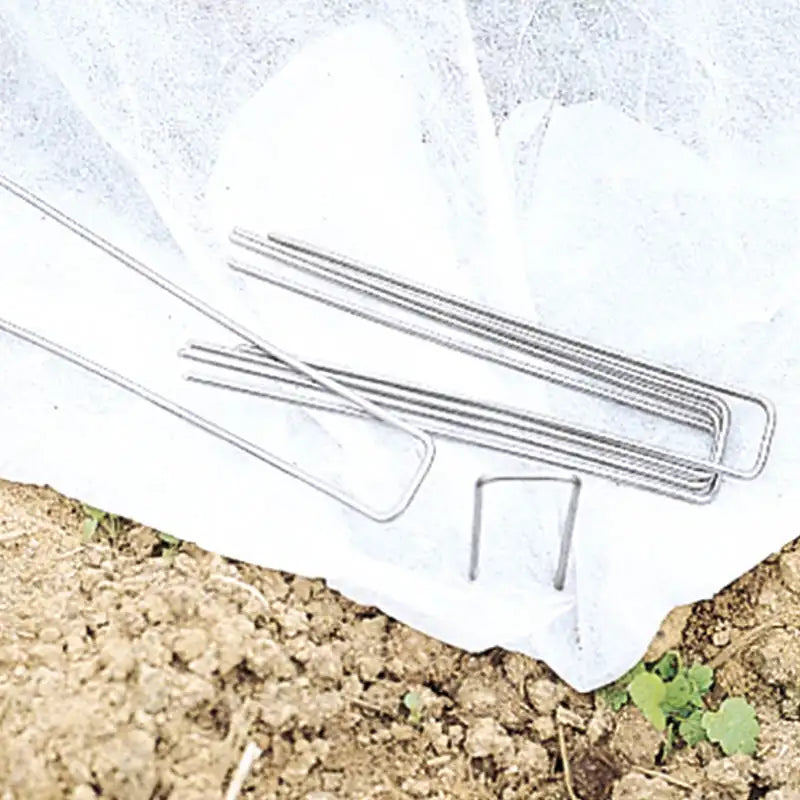Hair of the Dog Can Deter Evil Squirrels… But What About Slimy Slugs?
Q. Maxine (who prefers to be called ‘Max’) in Cornwall England writes: “Would pet hair work as well as human hair to destroy slugs?”
A. The original idea of using dog hair as a garden mulch was to deter Evil Squirrels. The idea came from bulb growers in Holland, who were testing ways to repel squirrels from devouring their precious tulip bulbs, both in the ground and after they flower.
No creature bothers daffodils, whose bulbs are toxic, but tulip bulbs are delicious and nutritious. In fact, the world lost many tulip varieties when Netherlanders were forced to delve into stored bulbs for food to avoid starvation during World War II.
As most of us know all too well, Evil Squirrels LOVE digging up and devouring tulip bulbs. But the Dutch wisely observed that dogs hate Evil Squirrels and Evil Squirrels hate dogs. So they collected dog hair from groomers and used it to literally ‘mulch’ freshly planted tulip beds in the Fall and again when the flower stalks began poking out the following Spring.
Those ‘doggie’ beds were untouched, while nearby no-dog-hair beds were severely molested. Dog hair should be easy to find. If you don’t have a personal Bowser, ask a friend with a (preferably long-haired) dog for their brushings, or ask a local groomer to save you a bag or seven.
Ah, but we are supposedly talking about slug control. On a trip to the UK long before I became a gardener, I learned that slugs were their number one garden menace. The cool damp climate made living easy for slugs, and they repaid gardeners by eating everything they had to the ground overnight.
The idea of mulching plants with human hair first began as a ‘garden tip’ designed to slowly feed the soil as the Nitrogen-rich hair decomposed; but it was soon observed that slugs got tangled up in the hair, could not escape it and croaked, leading many gardeners to rush to the local salon or barber shop for sweepings. Hair is hair, so dog hair, cat hair, and human hair will all tie up slugs. (Avoid using heavily treated human hair around edibles.)
But we would be remiss not to also mention the time-tested and very effective beer trap. You buy a case of the cheapest beer available in the largest size available—a combination that might make some of you start chanting “PBR! PBR!” Those initials, of course, stand for Pabst Blue Ribbon: a workingman’s beer from the 1800s that went through several periods of popularity and decline until around the year 2000, when it was unofficially adopted as ‘the’ hipster beer. The low price certainly didn’t hurt, and it soon became a sort of anti-status symbol.
We seize on this specific brew as it is available in massive forty-ounce cans (a regular can of beer contains twelve ounces) and PBR lager has an impressive alcohol content of 4.8 percent, which is important as you need to get the slugs drunk for it to work.
BUT a lot of advice on this subject is woefully inadequate or just plain wrong. Many sources specify using {quote} “stale beer”, which is as attractive to slugs as it is to people. Other sources either ignore the timing of application or get it wrong, which will not help you achieve the desired results.
Gather your containers: empty cat food cans; pint size—or even better—half pint size—plastic deli containers; chipped plates or saucers…anything that can hold a decent amount of beer. Arrange the containers in the garden, especially around plants that slugs prefer, like lettuce and potatoes. Then go out after the heat of the day dissipates and fill your containers with FRESH beer.
As the sun goes down, the slugs come out and are lured to their doom by the yeasty smell of the fresh beer, and then the alcohol incapacitates them. In the morning, your containers should be filled with lots of dead drunken slugs. Do not throw them away! Some research has found that live slugs are repelled by a circle of their dead cousins; other sources, noting that slugs are cannibalistic, hope that those yeasty former friends will be eaten instead of your plants.
Repeat as often as possible, always using fresh beer, poured as the sun goes down (just like at your favorite human watering hole).
In addition, try not to let your garden get overgrown; space between plants is helpful for many reasons, including removing daytime hiding places and helping keep leaves dry.
You can also lay flat boards (like fence slats) around your frequently attacked plants for the slugs to hide under when the sun comes up. Then at your leisure (or leisure) lift up the boards and scrape all the hiding slugs into a bucket with a flat metal ruler. Have some soapy water in the bottom—unless you intend to feed the captured slugs to backyard fowl, which we heartily endorse.
And if you like the idea of going slug hunting at night when they’re active, use a salt shaker you have engineered to have just one hole open in the lid, filled with the smallest, most refined grains you can find; and try and hit each slug with a single granule. Such small amounts of salt won’t harm your soil, but they’ll make slugs shrivel up faster than Margaret Hamilton!
A. The original idea of using dog hair as a garden mulch was to deter Evil Squirrels. The idea came from bulb growers in Holland, who were testing ways to repel squirrels from devouring their precious tulip bulbs, both in the ground and after they flower.
No creature bothers daffodils, whose bulbs are toxic, but tulip bulbs are delicious and nutritious. In fact, the world lost many tulip varieties when Netherlanders were forced to delve into stored bulbs for food to avoid starvation during World War II.
As most of us know all too well, Evil Squirrels LOVE digging up and devouring tulip bulbs. But the Dutch wisely observed that dogs hate Evil Squirrels and Evil Squirrels hate dogs. So they collected dog hair from groomers and used it to literally ‘mulch’ freshly planted tulip beds in the Fall and again when the flower stalks began poking out the following Spring.
Those ‘doggie’ beds were untouched, while nearby no-dog-hair beds were severely molested. Dog hair should be easy to find. If you don’t have a personal Bowser, ask a friend with a (preferably long-haired) dog for their brushings, or ask a local groomer to save you a bag or seven.
Ah, but we are supposedly talking about slug control. On a trip to the UK long before I became a gardener, I learned that slugs were their number one garden menace. The cool damp climate made living easy for slugs, and they repaid gardeners by eating everything they had to the ground overnight.
The idea of mulching plants with human hair first began as a ‘garden tip’ designed to slowly feed the soil as the Nitrogen-rich hair decomposed; but it was soon observed that slugs got tangled up in the hair, could not escape it and croaked, leading many gardeners to rush to the local salon or barber shop for sweepings. Hair is hair, so dog hair, cat hair, and human hair will all tie up slugs. (Avoid using heavily treated human hair around edibles.)
But we would be remiss not to also mention the time-tested and very effective beer trap. You buy a case of the cheapest beer available in the largest size available—a combination that might make some of you start chanting “PBR! PBR!” Those initials, of course, stand for Pabst Blue Ribbon: a workingman’s beer from the 1800s that went through several periods of popularity and decline until around the year 2000, when it was unofficially adopted as ‘the’ hipster beer. The low price certainly didn’t hurt, and it soon became a sort of anti-status symbol.
We seize on this specific brew as it is available in massive forty-ounce cans (a regular can of beer contains twelve ounces) and PBR lager has an impressive alcohol content of 4.8 percent, which is important as you need to get the slugs drunk for it to work.
BUT a lot of advice on this subject is woefully inadequate or just plain wrong. Many sources specify using {quote} “stale beer”, which is as attractive to slugs as it is to people. Other sources either ignore the timing of application or get it wrong, which will not help you achieve the desired results.
Gather your containers: empty cat food cans; pint size—or even better—half pint size—plastic deli containers; chipped plates or saucers…anything that can hold a decent amount of beer. Arrange the containers in the garden, especially around plants that slugs prefer, like lettuce and potatoes. Then go out after the heat of the day dissipates and fill your containers with FRESH beer.
As the sun goes down, the slugs come out and are lured to their doom by the yeasty smell of the fresh beer, and then the alcohol incapacitates them. In the morning, your containers should be filled with lots of dead drunken slugs. Do not throw them away! Some research has found that live slugs are repelled by a circle of their dead cousins; other sources, noting that slugs are cannibalistic, hope that those yeasty former friends will be eaten instead of your plants.
Repeat as often as possible, always using fresh beer, poured as the sun goes down (just like at your favorite human watering hole).
In addition, try not to let your garden get overgrown; space between plants is helpful for many reasons, including removing daytime hiding places and helping keep leaves dry.
You can also lay flat boards (like fence slats) around your frequently attacked plants for the slugs to hide under when the sun comes up. Then at your leisure (or leisure) lift up the boards and scrape all the hiding slugs into a bucket with a flat metal ruler. Have some soapy water in the bottom—unless you intend to feed the captured slugs to backyard fowl, which we heartily endorse.
And if you like the idea of going slug hunting at night when they’re active, use a salt shaker you have engineered to have just one hole open in the lid, filled with the smallest, most refined grains you can find; and try and hit each slug with a single granule. Such small amounts of salt won’t harm your soil, but they’ll make slugs shrivel up faster than Margaret Hamilton!



